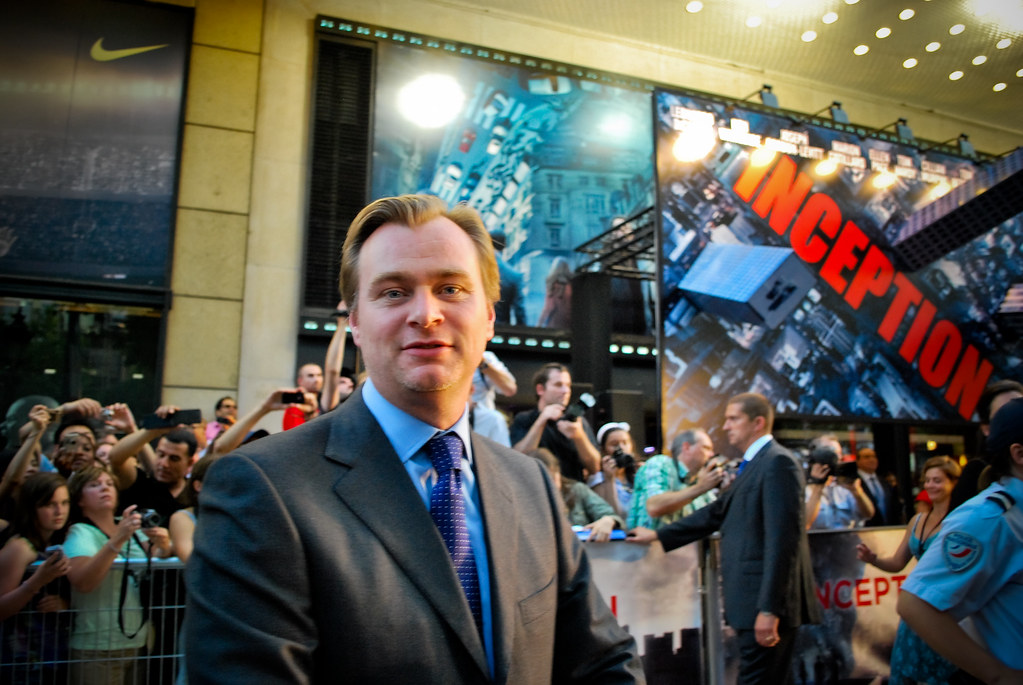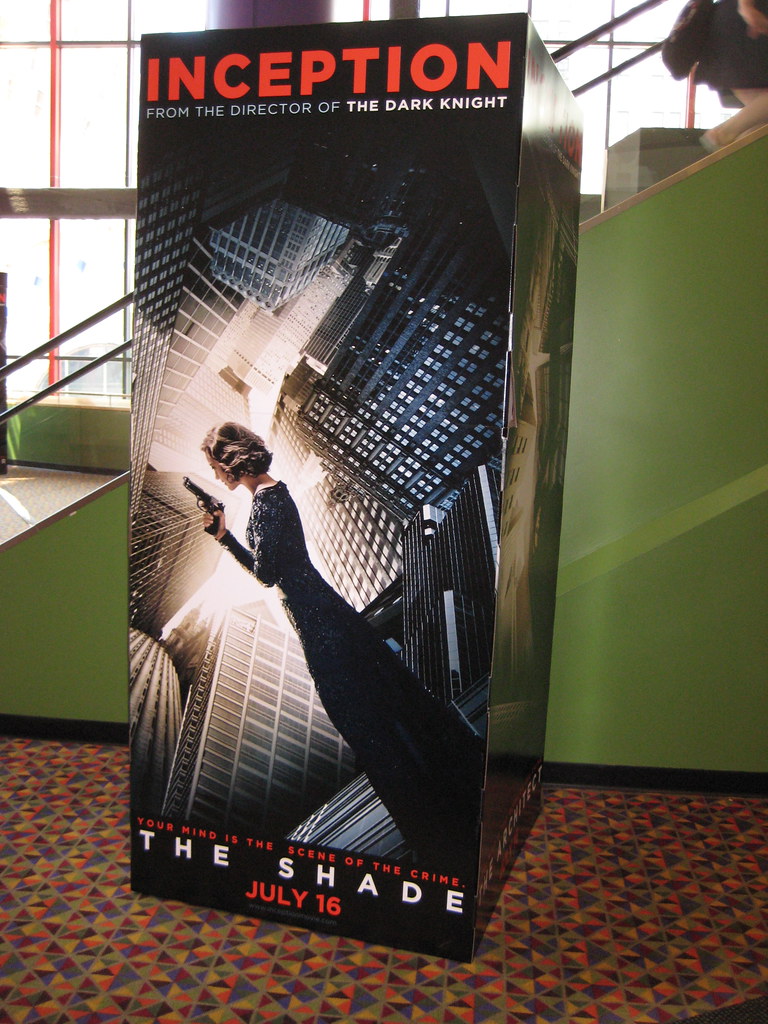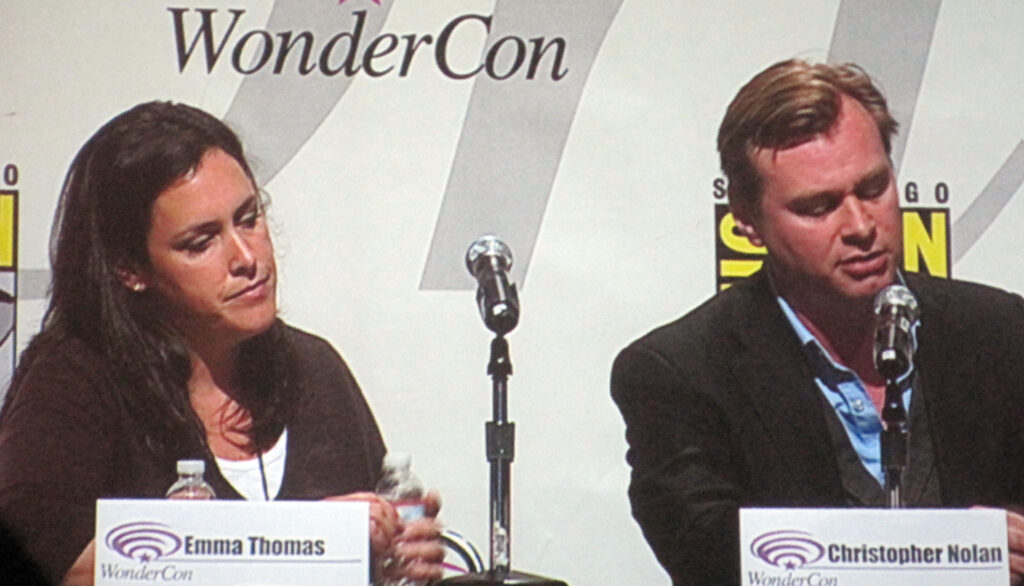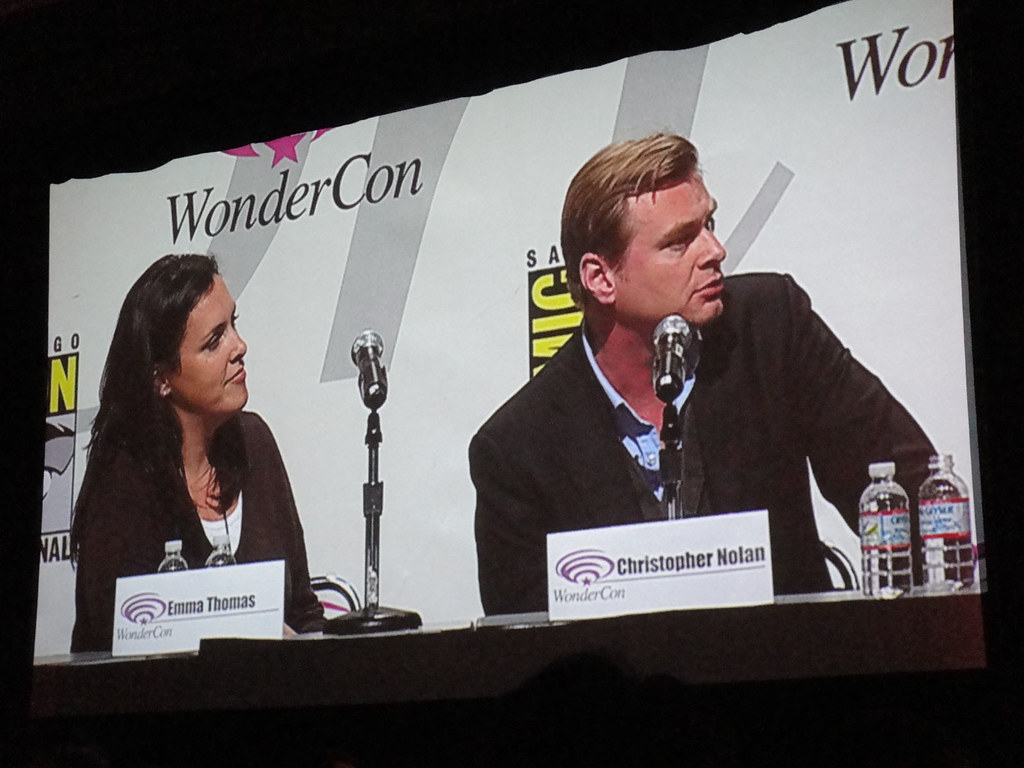
Christopher Nolan has cemented his status as one of the most visionary auteurs of our time, weaving intricate narratives that captivate and challenge audiences worldwide. From the mind-bending complexities of “Inception” to the historical gravitas of “Dunkirk” and the psychological depth of “The Dark Knight” trilogy, his films are more than just entertainment; they are meticulously crafted cinematic puzzles designed to provoke thought and discussion long after the credits roll.
Nolan’s unique blend of intellectual stimulation and visual spectacle sets him apart, a testament to his creative and innovative approach. While his works often leave viewers contemplating “How did we get here?” even as they acknowledge “I know where we are,” this signature quality is no accident. It stems from a deeply considered filmmaking philosophy that begins with the script and extends through every directorial choice.
For aspiring filmmakers and seasoned professionals alike, understanding the methods behind Nolan’s cinematic genius offers invaluable lessons. We’re diving deep into the mastermind’s approach, dissecting 14 essential filmmaking tips that underscore his profound respect for the craft and the audience’s intelligence. Prepare to be inspired as we unravel the intricate layers of his process, starting with the very foundations of storytelling.

1. Evoking Emotion Through Relatable Protagonists
Nolan consistently emphasizes that the heart of any compelling story lies in its emotional core. He advises filmmakers to “avoid making your story superficial. Evoke emotion in the audience through a relatable protagonist.” This isn’t merely about creating sympathetic characters; it’s about building a connection so profound that the audience becomes invested in their journey.
Emotion, as Nolan suggests, is the powerful current that will “carry you through the story.” To truly hook people, it’s paramount that they grasp the emotional stakes propelling the narrative and driving the main character’s choices. This understanding allows viewers to not just observe, but to feel, making the experience deeply personal and resonant.
By focusing on what truly drives a character from within, filmmakers can ensure their protagonists feel authentic and human. These are not just figures on a screen; they are vessels for the audience’s own hopes and fears. When emotions are clear and deeply felt, the story gains an undeniable gravity that commands attention and engagement throughout its entire run time.

2. Mastering Suspense with Subjective Point of View
For Nolan, suspense is not just a genre element; it is arguably “the most visual language of film.” He champions addressing the story through this lens, particularly by telling it “from a subjective point of view.” This technique is fundamental to his ability to keep audiences on the edge of their seats, constantly anticipating what comes next.
Keeping people entertained is a primary objective, and few tools are as effective as suspense. Nolan asks, “Can you make them worry about the characters? Can you make them excited and fearful at the same time?” These conflicting emotions are masterfully woven into his narratives, creating a rich tapestry of audience experience that is both thrilling and immersive.
When information is presented from a character’s subjective viewpoint, viewers are implicitly invited to judge actions and become deeply invested. This perspective creates a “vested interest in what comes next,” turning passive observation into active participation. Nolan often subtly waves clues in the audience’s face, presenting information with a “veiled context” that both intrigues and confuses, a hallmark of his suspenseful storytelling.

3. Immersing Audiences in the Protagonist’s Psyche
Beyond simply feeling for a character, Nolan encourages an even deeper level of engagement: inviting the audience into the character’s mind. His advice is to “make the audience question themselves by putting them inside of your protagonist’s mind.” This pushes viewers beyond observation, turning them into active participants in the character’s internal struggles.
The core of this immersion lies in clearly defining the protagonist’s desires. “What does your protagonist want?” Nolan posits, emphasizing that “the entire story you’re writing needs to be centered on your character and what they’re trying to achieve.” This clarity allows the audience to understand the character’s motivations, fostering empathy and intellectual connection.
As audiences begin to grasp what drives the protagonist, they naturally “enter their mind and reason with them.” This intimate understanding opens the door for powerful narrative turns. If the protagonist then makes “alternative choices,” it creates opportunities to “subvert expectations,” delivering unexpected twists that are emotionally earned because the audience has been privy to the character’s inner world.
Read more about: Unearthing the Hidden Magic: 15 Unforgettable Behind-the-Scenes Stories from Iconic Films and Legendary Directors

4. Pushing Cinematic Boundaries and Deconstructing Tropes
Christopher Nolan is synonymous with innovation, and this stems from his belief that the art of cinema has no intrinsic “rules or limitations.” He passionately urges filmmakers to “push the boundaries of filmmaking” and to “accept the fact that the art of cinema doesn’t have rules or limitations.” This philosophy empowers creators to look beyond conventional wisdom.
While “Hollywood might have limitations,” Nolan firmly states that “filmmaking does not.” He encourages writers and directors to continually “keep challenging what people can expect in storytelling.” This means actively seeking out opportunities to “flip genres, deconstruct tropes, tear down what’s expected, and give us what no one expects,” thereby crafting truly original and impactful experiences.
Nolan’s own career is a testament to this principle, consistently introducing fresh narrative structures and thematic explorations. His approach to structure, even drawing inspiration from musical concepts like the Shepard tone, showcases a willingness to reinvent. By refusing to be confined by established norms, filmmakers can carve out unique artistic identities and expand the very definition of what cinema can achieve.
Read more about: From Pennies to Masterpieces: 14 Low-Budget Films That Rose to Timeless Classic Status

5. Establishing Internal Rules for Implausible Worlds
Even when crafting narratives set in fantastical or highly conceptual realms, Nolan insists on a rigorous internal logic. His counsel is clear: “even if you’re writing a story set in an implausible world, make sure it has its own set of rules.” This commitment to consistency is crucial for audience immersion, regardless of how extraordinary the world may seem.
When embarking on a new story, a fundamental task for the writer is to “figure out the rules of the world.” It’s about clearly defining “what happens here, and what can the audience expect?” These established parameters are not limitations but rather foundations upon which a believable and engaging narrative can be built, even if those rules defy our everyday reality.
The rules a filmmaker sets forth serve multiple vital functions. They “set forth the tone” of the story and significantly “help people classify the genre and how to take certain moments and beats.” Therefore, it’s not enough for rules to exist; they must be “clearly defined and easy to grasp” for the audience, ensuring clarity within complexity and enhancing the overall narrative coherence.

6. Defining Characters Through Action, Not Exposition
Nolan firmly advocates for a dynamic approach to character development, one rooted in deeds rather than dialogue. He suggests that whatever film you are making, it should “rely on an underlying film-noir dynamic, in the way that you define a character through their actions, rather than what they say.” This principle is central to creating compelling and believable individuals.
Many emerging writers fall into the trap of over-explaining their characters. Nolan observes that they “make the big mistake of having characters tell us what they’re going to do, instead of just showing them do it.” The power of cinema lies in its visual nature, and showing a character’s essence through their choices and behaviors is far more impactful than mere exposition.
The directive is straightforward: “Have your characters actually do things, not just talk about them.” This approach reveals a character’s true nature, their motivations, and their flaws in a visceral way. Nolan understands that great characters often make “compromising decisions for what they believe are the right reasons,” driven by an “obsess[ion] with some value system.” These actions, even if morally ambiguous, provide profound insight into their identity.
Read more about: The King of Cool: An Esquire Deep Dive into Steve McQueen’s 12 Essential Films

7. The Importance of Knowing Your Ending From the Start
Nolan’s meticulous approach to storytelling is perhaps best encapsulated by his insistence on knowing the destination before embarking on the journey. He stresses the importance of sitting down to “start writing the full screenplay when you already know where you’re heading with it.” This pre-visualization is a cornerstone of his writing process, especially for his intricate narratives.
This isn’t just a suggestion; it’s a firm rule for Nolan: “Never ever write anything where you don’t know the end.” The clarity of a defined conclusion provides a roadmap, allowing for premeditated momentum and ensuring that every element contributes to a cohesive whole. He notes, “The more you have mapped out, the faster your screenplay will come to fruition.”
Nolan admits that he writes his scripts in the same order they will play on screen, even when dealing with non-linear structures. This commitment to a predetermined flow reinforces the idea that writing should only commence “when you know where it ends. Not before.” This disciplined approach is critical for crafting narratives that feel both expansive and tightly constructed, a hallmark of his acclaimed filmography.
Read more about: Decoding the Drips: Your Essential Guide to Diagnosing, Fixing, and Preventing Coffee Maker Leaks

8. Envisioning Worlds in Three-Dimensional Space
Christopher Nolan’s cinematic prowess isn’t solely confined to intricate screenplays; it extends profoundly into his directorial vision, particularly his ability to conceptualize a film in three-dimensional space. He advises aspiring directors to “not look at the shot as a two-dimensional picture, but look at where everything is in three-dimensional space.” This foundational perspective transforms a flat image into a living, breathing environment where every element occupies a deliberate, weighted position. It’s a crucial shift from merely framing to meticulously constructing a tangible world the audience can inhabit.
This spatial awareness is crucial for crafting the immersive experiences Nolan is celebrated for, often distinguishing his work from conventional cinematography. When writing, he layers details for both foreground and background, effectively treating scenes “like you’re writing a space. Who’s coming and going?” This forethought ensures the visual composition is always dynamic and purposeful, guiding the audience’s eye and enriching their understanding of the scene’s geography and emotional resonance.
Consider how Nolan constructs complex action sequences. His camera work, as seen in *Insomnia*, often establishes orientation and uses movement—like a dolly-in—to draw the viewer deeper into the action. Even subtle close-ups suggest spatial relationships, making the audience feel like “another person in the room watching Dormer work.” This deep understanding of depth helps create a “first-and-a-half person” point of view, allowing viewers to see what the character sees without losing broader context. His early experience as his own camera operator on *The Following* likely honed this profound spatial understanding.

9. Every Story Element Earns Its Place
Nolan is a firm believer in narrative rigor, advocating that “when using a story element you like, always give a good reason for it within your film.” This principle cuts against the temptation to include visually striking elements simply for aesthetic appeal, which he dismisses as the “we did it because it’s cool” trap. For Nolan, every choice must be profoundly motivated, serving as a vital, logical link in the intricate chain reaction that defines a well-constructed screenplay.
This meticulous approach ensures his films are tightly woven tapestries where cause and effect reign supreme. “Screenplays are chain reactions. Things happen because something else happens, not just to happen,” he explains. This means seemingly disparate events or character decisions are, in fact, integral cogs in a larger narrative mechanism, each propelling the story forward with undeniable logic, however complex or unexpected. This philosophy eliminates narrative fluff, making every moment count towards the overarching plot.
The principle extends beyond plot mechanics, impacting tone and thematic depth. By ensuring a robust, underlying rationale for every narrative beat, filmmakers can “make the reasons so crazy that the results blow people away.” This speaks to Nolan’s genius for intricate plotting and surprising twists that, upon reflection, feel entirely earned. It’s the subtle art of laying breadcrumbs, presenting information with a “veiled context” that both intrigues and confuses, only to reveal its full import at the optimal point.
His use of motifs, for instance, often appears as purely subtextual imagery. Yet, Nolan strategically “waves the clue in your face,” presenting these elements with a context deliberately obscured until a later revelation. This technique ensures nothing is arbitrary; even an intriguing visual or dialogue motif has a crucial, premeditated role in deepening the audience’s understanding and amplifying the story’s overall impact.
Read more about: Unmasked: 9 Fishing Rod Frustrations That Drive Anglers to Seek Superior Quality

10. Weaving Multi-Layered Narratives
A hallmark of Christopher Nolan’s distinctive style is his profound commitment to “add multiple layers” to his cinematic creations. This isn’t merely about superficial complexity; it’s a deep dedication to enriching every facet of a film, from nuanced characters to intricate world-building and the very fabric of the plot. He challenges filmmakers to move beyond “just surface-level,” urging them to “add some art” through symbolism and deeper levels of storytelling that consistently reward repeated viewings.
When Nolan speaks of layers, he refers to characters who feel genuinely nuanced, possessing internal conflicts and motivations beyond the immediately apparent. This sophistication elevates them from archetypes to deeply human individuals, often flawed and driven by complex value systems. Concurrently, it encompasses the meticulous world-building defining his universes, whether it’s the intricate dream architecture of *Inception* or the scientific principles governing *Interstellar*’s cosmos, each crafted with impressive depth and internal consistency.
These layers are precisely why Nolan’s films are often described as “cinematic puzzles,” demanding active participation from the audience. They are designed to provoke thought and fuel engaging conversations long after the credits roll, offering layers of meaning, emotional depth, and structural ingenuity that fans eagerly untangle. This complexity enhances rewatchability, as viewers continually discover new details and connections upon subsequent viewings, making each experience feel fresh and revealing.
The symbolic elements and meta-narratives woven into the fabric of his films, exploring profound concepts of time, identity, and the nature of storytelling, elevate them beyond mere entertainment into enduring works of art. Nolan’s commitment to “multiple layers” ensures his projects are not fleeting experiences but rather intricate tapestries designed for deep engagement, testament to his belief in the audience’s intellectual curiosity and desire for rich, meaningful narratives.
Read more about: A Legacy Remembered: Honoring the Lives of Notable Celebrities and Influential Figures We Lost in October 2025

11. The Power of Personal Fascination
Beyond technical craft and structural brilliance, Nolan emphasizes personal passion in filmmaking, positioning it as the true engine of creativity. He posits that “it’s much more important to write what’s interesting to you” than adhering to the adage of “write what you know.” For Nolan, creativity thrives on genuine curiosity, urging filmmakers to “write about something you want to learn about. Something you’re dying to uncover.” This intrinsic drive fuels the entire creative endeavor, ensuring authenticity, depth, and a compelling narrative voice.
This deep-seated interest is not just for the writer’s benefit; it’s a powerful, contagious force that enthralls the audience. Nolan believes that by pursuing subjects that genuinely ignite one’s curiosity, creators can allow “that passion and belief to be contagious for your reader.” When a filmmaker is visibly invested, that enthusiasm translates to the screen, drawing viewers into the narrative with a shared sense of wonder and discovery, making the experience far more engaging than a project born of obligation or trend-chasing. This personal conviction becomes the film’s magnetic core.
Indeed, Nolan’s filmography stands as a compelling testament to this principle. His profound explorations of time, memory, perception, and morality across films like *Memento*, *Inception*, and *Interstellar* are clearly driven by deep, personal fascination with these complex philosophical ideas. This intellectual curiosity transforms his films into captivating journeys of discovery, both for characters and for the audience. It’s this authentic passion that makes his work feel curated and authoritative, cementing his status as a visionary auteur whose films resonate deeply.
Read more about: 15 Vehicles Millennials Are Steering Clear Of: Unpacking the Generational Divide in Automotive Appreciation

12. Playing to Your Distinctive Strengths
In a landscape often dominated by formulaic approaches, Christopher Nolan champions the individual voice, advising filmmakers to “play to your strengths.” This invaluable invitation urges creators to recognize and lean into their unique talents, whether crafting “amazing dialogue,” designing breathtaking “set pieces,” or excelling within a particular genre. Identifying and leveraging these inherent capabilities allows a filmmaker’s artistic identity to truly flourish and stand out.
Understanding one’s specific strengths is crucial for carving out a distinctive style and voice in the competitive film industry. Instead of trying to conform to popular trends or emulate others, Nolan encourages artists to “lean in and let them take you where you want to go.” This self-awareness isn’t a limitation; rather, it’s a liberating force enabling filmmakers to develop a signature approach, one that feels authentic and allows them to execute their vision with unparalleled confidence and expertise. This is how legendary directors cultivate their recognizable artistic fingerprints.
This directive is deeply rooted in auteur theory, where a director’s personal vision and consistent stylistic choices are paramount, creating a cohesive body of work. Nolan himself, known for intricate narrative structures, grand visual spectacles, and cerebral themes, consistently plays to his strengths in crafting “modern epics” that blend intellectual stimulation with visual grandeur. By embracing what they do best, filmmakers elevate their craft, creating works not only skillfully executed but uniquely theirs, resonating deeply with audiences appreciating a singular artistic voice.
Read more about: The Billionaire Blueprint: 14 Shocking Daily Routines of Tech Titans and Top CEOs That Fuel Their Success

13. Crafting the Film You Yearn to See
In a world brimming with fleeting trends and market-driven productions, Christopher Nolan’s advice to “make a film you would want to see yourself” stands as a powerful call for artistic authenticity and unwavering personal vision. He urges creators to deeply consider, “what do you want to watch in theaters?” This seemingly simple yet profound question cuts directly to the core of genuine artistic motivation, suggesting that the most compelling stories emerge from a filmmaker’s own deepest desires and tastes, rather than an attempt to chase passing fads.
Trying to “write with a trend” often leads to diluted, uninspired, and ultimately forgettable work. Nolan profoundly understands that the arduous process of writing a screenplay and bringing it to life demands profound personal investment and unwavering dedication. He pointedly questions, “Why else would you want to put yourself through the writing?” This rhetorical query powerfully underscores that passion is the ultimate, indispensable fuel for the creative engine, transforming the often-challenging journey of filmmaking into a labor of love when one truly believes in their creation.
This tip connects intrinsically with Nolan’s broader philosophy of respecting the audience’s intelligence and their craving for substantive content. By making films he himself would genuinely want to experience, Nolan inherently crafts stories that are stimulating, intricate, and deeply felt. This commitment to personal taste ensures his work maintains unique integrity, offering viewers not just passive entertainment, but a curated experience crafted with genuine enthusiasm, inviting them into a world the filmmaker finds irresistibly captivating and thought-provoking.
Read more about: Beyond the Honeymoon: 15 Psychological Insights to Revitalize Passion and Intimacy in Committed Partnerships

14. The Mathematical Precision of Structure
Christopher Nolan approaches screenplay structure not as an abstract artistic concept, but with the rigorous precision and analytical mindset of a mathematician. He advises filmmakers to “approach structure mathematically,” conceptualizing it as “pieces of a puzzle that have to fit together to build something great.” This analytical mindset is fundamental to his unparalleled ability to construct narratives both incredibly complex in ambition and remarkably cohesive in execution, even those defying conventional linear progression.
For Nolan, understanding structure means meticulously counting “the pages” and recognizing “that each detail you add becomes additive to the whole.” This perspective ensures every scene, character beat, piece of dialogue, and plot point serves a specific, calculated function in the larger narrative architecture. It’s about premeditated momentum, where no element is superfluous, and all contribute to the overarching design, culminating in a satisfying and intellectually stimulating conclusion that feels both expansive and tightly controlled.
This mathematical approach is strikingly evident in the iconic structures of films like *Memento*, which cleverly unfolds in reverse, forcing the audience to piece together fragments of memory, or *Dunkirk*, which masterfully interweaves three distinct timelines—the Mole, the Sea, and the Air—each operating on different temporal scales yet converging to a single, explosive climax. Such intricate constructions are not accidental; they are the result of deliberate, almost algorithmic planning, creating narratives where the form itself contributes significantly to the meaning.
Nolan even integrates this structural philosophy into the auditory experience of his films. His use of concepts like the Shepard tone in his scores, creating an auditory illusion of perpetual ascent, perfectly mirrors his structural ambitions—building relentless intensity and momentum that continually drives the audience forward. This masterful, precise construction is a cornerstone of his unique storytelling, inviting viewers to actively engage with the intricate, clockwork machinery of his cinematic worlds, making sense of their elegant, predetermined logic.
**The Enduring Legacy of a Visionary Auteur**
As we conclude our deep dive into Christopher Nolan’s 14 essential filmmaking tips, it becomes unequivocally clear that his genius lies not in a secret formula, but in a holistic, disciplined, and profoundly passionate approach to cinema. From the microscopic precision of a single shot’s spatial arrangement to the macroscopic architecture of multi-layered narratives, Nolan consistently demonstrates an unwavering commitment to the craft. His films challenge, engage, and inspire, never underestimating the audience’s capacity for intellectual curiosity and emotional depth, transforming passive viewing into an active, rewarding experience.
Read more about: Decoding Reality: 12 Essential Truths About ‘Truth’ You Need to Understand Now
Nolan’s enduring legacy is defined by his courage to push cinematic boundaries, his dedication to authentic storytelling driven by personal fascination, and his meticulous construction of intricate cinematic worlds that resonate long after the credits have rolled. These 14 tips are far more than just guidelines; they are an invitation to aspiring filmmakers to embrace complexity, cultivate their unique voice, and, above all, to craft stories they themselves would be desperate to see. In doing so, they might just achieve the same exhilarating, thought-provoking impact that has cemented Christopher Nolan as one of the most visionary and influential auteurs of our time.


